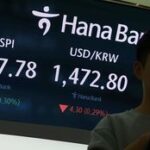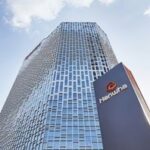North Korea’s ‘Assassination Unit’: Why 12,000 Special Forces Are Heading to Russia
Daniel Kim Views
North Korea’s Special Forces: Strength, Strategy, and Deployment
Role of the Storm Corps and Specialized Units in North Korea’s Military Operations
Training, Tactics, and Military Integration for Rapid Conflict Response

According to South Korea’s National Intelligence Service (NIS), over 1,500 North Korean special forces have been transported to Vladivostok aboard Russian vessels since October 8. The deployment has sparked interest in North Korea’s special operations capabilities, with reports suggesting that Pyongyang plans to send a total of 12,000 elite troops to Russia.
The Defense White Paper indicates that North Korea has been continuously strengthening its special operations forces, which include specialized units designed to target high-value individuals in South Korea. North Korea’s special forces, numbering around 200,000, are four times the size of U.S. special operations forces, which have roughly 50,000 members. These elite troops are stationed in forward positions, ready to mobilize in case of conflict.
North Korea’s special forces were first explicitly acknowledged in the 2018 Defense White Paper, highlighting the regime’s increasing focus on unconventional warfare. Prior reports, dating back to November 2016, from state-run media, Korean Central News Agency, detailed Kim Jong Un’s supervision of the 525th Army Unit’s special operations battalion—often called the “assassination unit.”
Kim’s dedication to this elite force was further showcased in April 2017 during North Korea’s “special forces drop and target strike competition,” where the 525th Army Unit’s battalion, known as the assassination unit, outperformed other specialized units. Kim Jong Un personally awarded them with automatic rifles and binoculars for their achievements.
The capabilities of North Korea’s special forces were also discussed during a closed-door meeting on February 8, 2011, attended by members of South Korea’s National Assembly Defense Committee and Walter Sharp, the former commander of U.S. Forces Korea. Sharp confirmed that North Korea’s special forces consist of approximately 200,000 troops, including 60,000 designated for high-level special operations, such as those responsible for the sinking of the Cheonan. The remaining 140,000 are classified as light infantry, known for rapid infiltration using lightweight equipment in both mountainous and urban areas.
Speed and Stealth: North Korea’s Tactical Edge

The core of North Korea’s special forces is the Special Operations Corps. This unit was first unveiled to the public during the April 15, 2017, parade. It was established as an independent branch of the military, similar to the Army, Navy, and Air Force, solely focused on special operations. North Korea does not operate under a four-branch military system. This unit, closely linked to the North Korean Army’s 11th Corps (Storm Corps), integrates elite forces from the Navy and Air Force, creating a North Korean equivalent to the U.S. Joint Special Operations Command (JSOC).
The U.S. Joint Special Operations Command (JSOC), established in 1980, oversees Tier 1 Special Mission Units (SMUs) and Joint Special Operations Task Forces (JSOTFs), managing a broad range of high-priority special operations. Operating under the larger U.S. Special Operations Command (USSOCOM), JSOC is led by a U.S. Army major general. Its subordinate units include some of the most elite forces in the U.S. military, such as Delta Force from the Army, the Naval Special Warfare Development Group (commonly known as SEAL Team 6) from the Navy, and the 24th Special Tactics Squadron from the Air Force. In addition to these combat units, JSOC commands specialized support units like the Joint Aviation Unit, Joint Communications Unit, Signal Intelligence Unit, Technical Intelligence Unit, and a dedicated Intelligence Brigade, all contributing to its wide-ranging special operations capabilities.
Special Operations Corps: Training and Strategy
The Special Operations Corps is believed to consist of 14 brigades—10 Army, 2 Naval sniper, and 2 Air Force strike brigades—along with amphibious assault battalions and mountain reconnaissance units. This 200,000-strong force is divided into 60,000 specialized troops and 140,000 light infantry. These units train for rapid, deep infiltration into South Korea, utilizing tactics such as wearing civilian clothes or disguises resembling South Korean military uniforms.
Since Kim Jong Un took power, North Korean special forces have increasingly conducted provocations along the border, seemingly testing South Korean defenses. These operations, which involve crossing the border undetected, are believed to be part of North Korea’s broader strategy to swiftly occupy critical positions in the event of a full-scale conflict.
This appears to test our military’s alert status and is interpreted as an extension of efforts to enhance infiltration capabilities, aiming to occupy key positions in the event of full-scale conflict swiftly. North Korean special forces reportedly infiltrate wearing civilian clothing or disguises resembling South Korean military uniforms, armed with weapons and equipment such as AK-47s, M-16s, M-3s, grenades, RPG-7s, and AT-3 anti-tank missiles, as well as anti-personnel and anti-tank mines.
The Storm Corps and Its Role in Infiltration Operations

North Korea’s Special Operations Corps is composed of various specialized units, including light infantry (known as “Lightning”), snipers (referred to as “Thunder”), air assault troops (called “Storm”), naval snipers, air snipers, shock assault troops, and mountain reconnaissance units. These forces are organized into light infantry brigades assigned to different corps, naval sniper brigades under Navy Command, air sniper brigades under Air Force Command, and reconnaissance battalions reporting to the Reconnaissance Bureau. Additionally, mixed brigades handle special mobility and support missions across these domains.
At the core of North Korea’s special operations capabilities is the Storm Corps, which evolved from the infamous 124th Unit, responsible for the 1968 Blue House raid, and later expanded into a specialized 8th Corps. The Storm Corps now includes 10 brigades, such as the light infantry brigade (“Lightning”), air assault brigade (“Storm”), and sniper brigade (“Thunder”). Its total strength is estimated to range between 40,000 and 80,000 personnel. Current reports indicate that around 15% of the Storm Corps—roughly four brigades—are part of the 12,000 troops being deployed to Russia.
The Storm Corps’ primary mission is infiltrating and disrupting rear areas and key installations during wartime. Speculation suggests that North Korean troops sent to Russia may be tasked with rear infiltration missions, potentially involved in operations to reclaim territory in the Kursk Oblast.
U.S. and South Korean military authorities estimate that around 60,000 of North Korea’s special operations troops, also known as the “Broom Unit” for their ability to “sweep” away enemy forces swiftly, are engaged in active special operations. Our military closely monitors the movements and activities of these elite units.
North Naval Sniper Brigades Similar to Marine Special Reconnaissance Units
North Korea’s special operations forces are concentrated in several specialized brigades, including naval and air force sniper brigades, air assault brigades, and reconnaissance brigades. The air assault brigades focus on striking air bases and conducting guerrilla warfare in mountainous regions, while the naval sniper brigades specialize in surprise infiltration missions. Using hovercraft and high-speed landing crafts, they target coastal areas dense with islands. These naval sniper brigades strongly resemble Marine special reconnaissance units and the assault battalions of the U.S. 1st Marine Division. Additionally, the “light infantry brigade” stationed at North Korea’s front lines comprises some of the most highly trained special forces within the regime’s military structure.
A central element of North Korea’s military strategy for its Special Operations Corps is speed. Intelligence suggests that, in the event of full-scale conflict, their goal is to unify the Korean Peninsula within 30 days. This would involve rapidly breaching the defenses of the ROK-U.S. Combined Forces before U.S. reinforcements can be deployed.
To meet these demands, North Korean special forces undergo intense and demanding training. They reportedly carry up to 25 kilograms (55 pounds) of equipment, completing forced marches of 40 kilometers (25 miles) overnight and up to 120 kilometers (75 miles) in two days. Their training also includes crossing a 1,300-foot-wide river in under 30 minutes. During war, these forces are expected to infiltrate South Korean territory through tunnels, on foot, or via hovercraft. Additionally, they utilize AN-2 transport planes—designed to evade radar detection—to carry out disruption operations behind enemy lines in South Korea’s rear areas.















Most Commented